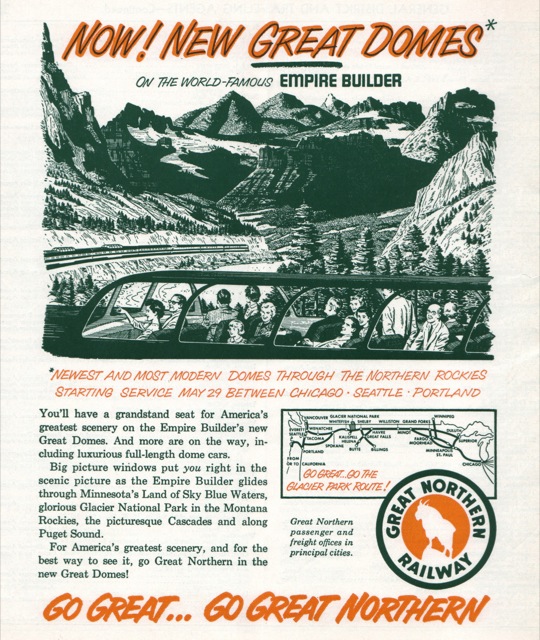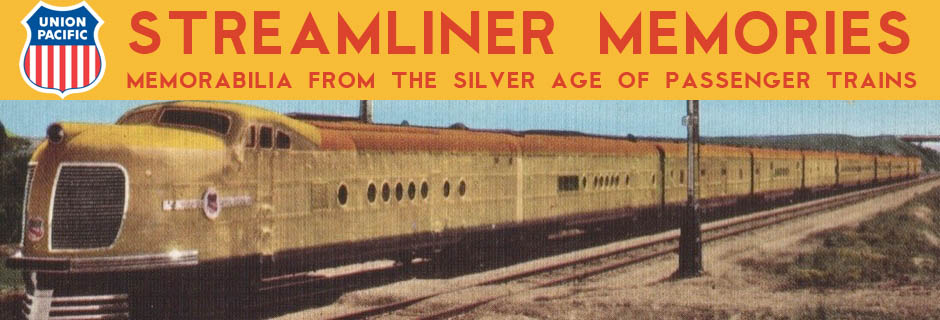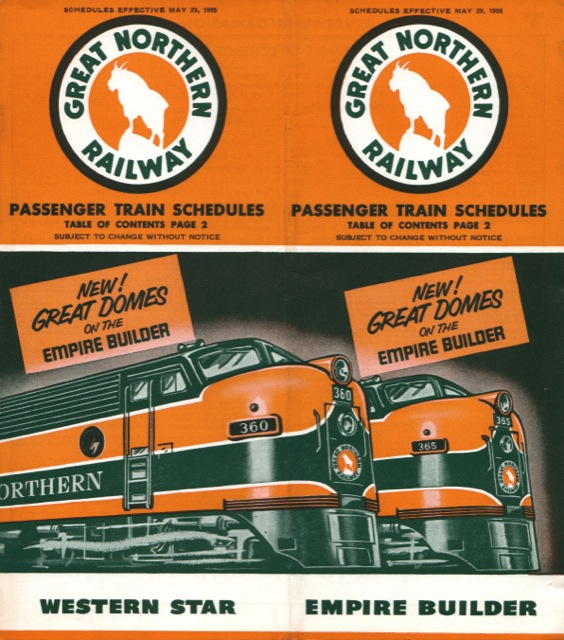Great Northern’s summer 1955 timetable was the first to feature dome cars on the Empire Builder. The domes are illustrated in an ad on the back cover whose drawing is carefully cropped to disguise the fact that the dome closest to the observer is a full-length dome, which wouldn’t actually appear on the railway for another year.
Click image to download a 23.7-MB PDF of this timetable.
The 1947 timetable was 44 pages long, but this one is only 36. The biggest difference is that a lot of minor Great Northern trains no longer operate; while there were 92 numbered timetables in 1947, there were only 80 in 1955. GN also somewhat condensed the presentation of its mainline trains from 9 pages in 1947 to 7 pages in 1955. In total, the ’55 timetable has 6 fewer pages of Great Northern train timetables than in 1947. There is also one less page each of train equipment descriptions, rail fares, and interior ads, but a whole page of connecting bus schedules.

In addition to the Empire Builder and Western Star, the Great Northern ran another train between St. Paul and the Pacific Northwest: the Fast Mail, which carried express mail and a single coach for passengers who wanted to travel at a different time from the other trains. Due to more stops, the Fast Mail wasn’t especially fast: While the Empire Builder required 28-1/3 hours to go from St. Paul to Spokane, the Fast Mail took six hours more. That’s still about an hour less than the Western Star, which took a longer route than the other two trains through Grand Forks, ND and Great Falls, MT.
Rail fares have increased about 7 or 8 percent since 1947, which was less than the 20 percent inflation during that period). The fare increase is partly mitigated by the decline in the federal tax on train tickets from 15 to 10 percent. Still, fares are high when adjusting for inflation to today’s dollars: the round-trip coach fare between Chicago and Seattle would be almost $800 including tax compared with about $600 today on Amtrak, while a first-class fare with a roomette would be close to $1,700; a comparable fare on Amtrak would be under $1,500, and that includes all meals.

